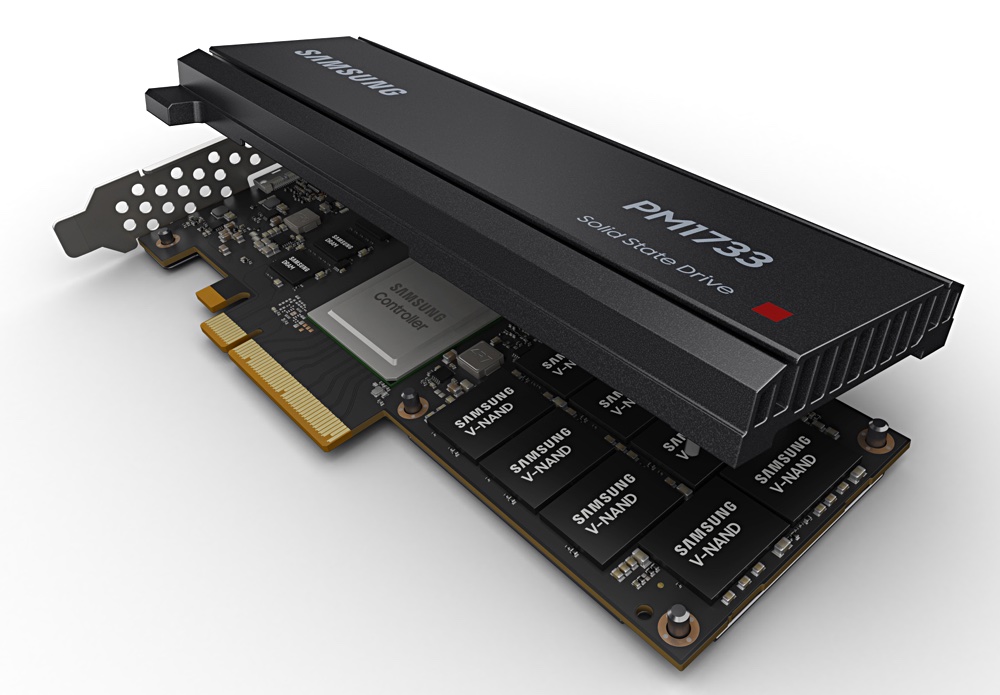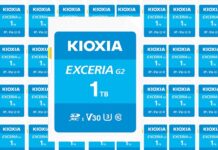Samsung has started shipping smart PM1733 and 1735 SSDs with up to 30-plus TB capacity, gen 4 PCIe for faster data transfer and features that enable them to operate for longer and with more users.
Speeds and feeds first and then we’ll look at the extra features.
Both SSDs use NVMe over PCIe gen 4. They come in U.2 (2,5-inch) and half-height, half-length Add-in-Card formats. The capacity ranges are;
- PM1733 U.2 – 0.96TB – 30.72TB
- PM1733 AIC – 1.92TB – 15.36TB
- PM1735 U.2 – 0.8TB – 12.8TB
- PM1735 AIC – 1.6TB – 12.8TB
The PM1733 is optimised for read performance with endurance of a single drive write per day (DWPD) for fiv years. The PM1735 is optimised for mixed read/write use and endurance is three DWPDs for five years.

Bandwidth is up to 3.8GB/sec sequential write for both SSDs in both formats. Bandwidth up to 8GB/sec sequential write in AIC format and 6.4GB/sec in U.2 format. These speeds are at least twice as fast as current PCIe gen 3 drives.
Random read IOPS are up to 260,000 for the PM1735 U.2 with an amazing 1.45m random read IOPS. Samsung has not supplied IOPS numbers for the PM1735 AIC or the PM1733 in U,2 or AIC formats.
Feature fun
The performance numbers are great but the standouts are three extra controller features.
Fail-in-place. If a fault is identified in any NAND chip inside these drives – there are 512 inside the 30.72TB model – FIP software activates error-handling algorithms automatically to effectively bypass the chip. This is conceptually similar to disk bad block handling and enables the SSD to keep working if NAND chips inside it fail.
Virtual SSDs. The SSD is presented as up to 64 virtual and smaller SSDs, providing independent, virtual workspaces for multiple users. Server CPU tasks such as Single-Root I/O Virtualization (SR-IOV) can be done by the SSD controller, offloading the server host.
V-NAND machine learning technology. This detects any variation among circuit patterns through big data analytics. It looks at and verifies cell characteristics and predicts how cell behaviour will develop. As we understand it, the SSD controller monitors telemetry from the chips and runs it through machine learning models to track cell performance.
Samsung said this means its SSDs have higher levels of performance, capacity and reliability because they can sweat their cell assets better. As SSD chips move from TLC to QLC with more voltage levels in the cells, the precision management of cell characteristics becomes more important.
Western Digital’s zoning concept is another example of extra drive features. Blocks & Files expects this approach to spread quickly to other enterprise SSD suppliers.We are heading towards an era of PCIe 4 speed-accelerated and much smarter SSDs.








